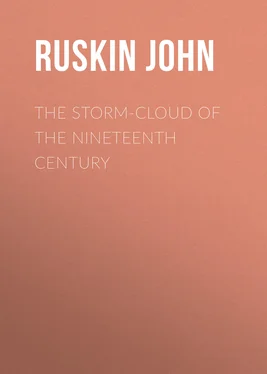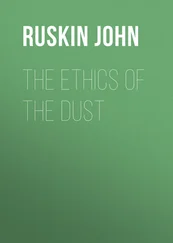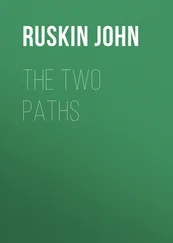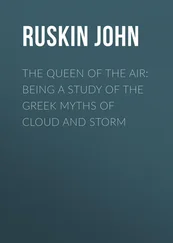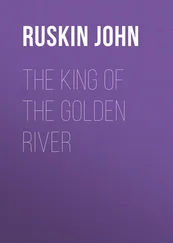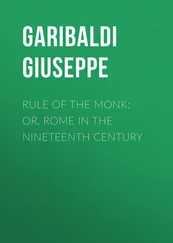John Ruskin - The Storm-Cloud of the Nineteenth Century
Здесь есть возможность читать онлайн «John Ruskin - The Storm-Cloud of the Nineteenth Century» — ознакомительный отрывок электронной книги совершенно бесплатно, а после прочтения отрывка купить полную версию. В некоторых случаях можно слушать аудио, скачать через торрент в формате fb2 и присутствует краткое содержание. Жанр: foreign_prose, literature_19, foreign_antique, на английском языке. Описание произведения, (предисловие) а так же отзывы посетителей доступны на портале библиотеки ЛибКат.
- Название:The Storm-Cloud of the Nineteenth Century
- Автор:
- Жанр:
- Год:неизвестен
- ISBN:нет данных
- Рейтинг книги:3 / 5. Голосов: 1
-
Избранное:Добавить в избранное
- Отзывы:
-
Ваша оценка:
- 60
- 1
- 2
- 3
- 4
- 5
The Storm-Cloud of the Nineteenth Century: краткое содержание, описание и аннотация
Предлагаем к чтению аннотацию, описание, краткое содержание или предисловие (зависит от того, что написал сам автор книги «The Storm-Cloud of the Nineteenth Century»). Если вы не нашли необходимую информацию о книге — напишите в комментариях, мы постараемся отыскать её.
The Storm-Cloud of the Nineteenth Century — читать онлайн ознакомительный отрывок
Ниже представлен текст книги, разбитый по страницам. Система сохранения места последней прочитанной страницы, позволяет с удобством читать онлайн бесплатно книгу «The Storm-Cloud of the Nineteenth Century», без необходимости каждый раз заново искать на чём Вы остановились. Поставьте закладку, и сможете в любой момент перейти на страницу, на которой закончили чтение.
Интервал:
Закладка:
12
See below, on the different uses of the word 'reflection,' note 14, and note that throughout this lecture I use the words 'aqueous molecules,' alike of water liquid or vaporized, not knowing under what conditions or at what temperatures water-dust becomes water-gas; and still less, supposing pure water-gas blue, and pure air blue, what are the changes in either which make them what sailors call "dirty "; but it is one of the worst omissions of the previous lecture, that I have not stated among the characters of the plague-cloud that it is always dirty,
[In my final collation of the lectures given at Oxford last year on the Art of England, I shall have occasion to take notice of the effect of this character of plague-cloud on our younger painters, who have perhaps never in their lives seen a clean sky!]
and never blue under any conditions , neither when deep in the distance, nor when in the electric states which produce sulphurous blues in natural cloud. But see the next note.
13
Black clouds.—For the sudden and extreme local blackness of thundercloud, see Turner's drawing of Winchelsea, (England series), and compare Homer, of the Ajaces, in the 4th book of the Iliad,—(I came on the passage in verifying Mr. Hill's quotation from the 5th.)
"ἅμα δὲ νέφος εἴπετο πεζῶν.
Ὡς δ' ὅτ' ἀπὸ σκοπιῆς εἶδεν νέφος ἀιπόλος ἀνὴρ
Ἐρχόμενον κατὰ πόντον ὑπὸ Ζεφύροιο ἰωῆς,
Τῶ δέ τ', ἄνευθεν ἔοντι, μελάντερον, ἠύτε πίσσα
Φαίνετ', ἰὸν κατὰ πόντον, ἄγει δέ τε λάιλαπα πολλήν‧
Ῥιγησέν τε ἰδὼν, ὑπό τε σπέος ἤλασε μῆλα‧
Τοῖαι ἅμ Αἰάντεσσιν ἀρηϊθόων αἰζηῶν
Δήϊον ἐσ πόλεμον πυκιναὶ κίνυντο φάλαγγες
Κυάνεαι,"
I give Chapman's version—noting only that his breath of Zephyrus, ought to have been 'cry' or 'roar' of Zephyrus, the blackness of the cloud being as much connected with the wildness of the wind as, in the formerly quoted passage, its brightness with calm of air.
"Behind them hid the ground
A cloud of foot, that seemed to smoke. And as a Goatherd spies
On some hill top, out of the sea a rainy vapor rise,
Driven by the breath of Zephyrus, which though far off he rests,
Comes on as black as pitch, and brings a tempest in his breast
Whereat he, frighted, drives his herds apace into a den;
So, darkening earth, with swords and shields, showed these with all their men."
I add here Chapman's version of the other passage, which is extremely beautiful and close to the text, while Pope's is hopelessly erroneous.
"Their ground they still made good,
And in their silence and set powers, like fair still clouds they stood,
With which Jove crowns the tops of hills in any quiet day
When Boreas, and the ruder winds that use to drive away
Air's dusky vapors , being loose , in many a whistling gale,
Are pleasingly bound up and calm, and not a breath exhale."
14
'Reflected.'—The reader must be warned in this place of the difference implied by my use of the word 'cast' in page 11, and 'reflected' here: that is to say, between light or color which an object possesses, whatever the angle it is seen at, and the light which it reverberates at one angle only. The Alps, under the rose
[In speaking, at p. 11of the first lecture, of the limits of depth in the rose-color cast on snow, I ought to have noted the greater strength of the tint possible under the light of the tropics. The following passage, in Mr. Cunningham's 'Natural History of the Strait of Magellan,' is to me of the greatest interest, because of the beautiful effect described as seen on the occasion of his visit to "the small town of Santa Rosa," (near Valparaiso.) "The day, though clear, had not been sunny, so that, although the snowy heights of the Andes had been distinctly visible throughout the greater part of our journey, they had not been illuminated by the rays of the sun. But now, as we turned the corner of a street, the chain of the Cordillera suddenly burst on our gaze in such a blaze of splendor that it almost seemed as if the windows of heaven had been opened for a moment, permitting a flood of crimson light to stream forth upon the snow. The sight was so unexpected, and so transcendently magnificent, that a breathless silence fell upon us for a few moments, while even the driver stopped his horses. This deep red glow lasted for three or four minutes, and then rapidly faded into that lovely rosy hue so characteristic of snow at sunset among the Alps"]
of sunset, are exactly of the same color whether you see them from Berne or Schaffhausen. But the gilding to our eyes of a burnished cloud depends, I believe, at least for a measure of its luster, upon the angle at which the rays incident upon it are reflected to the eye, just as much as the glittering of the sea beneath it—or the sparkling of the windows of the houses on the shore.
Previously, at page 10, in calling the molecules of transparent atmospheric 'absolutely' unreflective of light, I mean, in like manner, unreflective from their surfaces . Their blue color seen against a dark ground is indeed a kind of reflection, but one of which I do not understand the nature. It is seen most simply in wood smoke, blue against trees, brown against clear light; but in both cases the color is communicated to (or left in) the transmitted rays.
So also the green of the sky ( p. 13) is said to be given by transmitted light, yellow rays passing through blue air: much yet remains to be known respecting translucent colors of this kind; only let them always be clearly distinguished in our minds from the firmly possessed color of opaque substances, like grass or malachite.
15
Diffraction.—Since these passages were written, I have been led, in conversation with a scientific friend, to doubt my statement that the colored portions of the lighted clouds were brighter than the white ones. He was convinced that the resolution of the rays would diminish their power, and in thinking over the matter, I am disposed to agree with him, although my impression at the time has been always that the diffracted colors rose out of the white, as a rainbow does out of the gray. But whatever the facts may be, in this respect the statement in the text of the impossibility of representing diffracted color in painting is equally true. It may be that the resolved hues are darker than the white, as colored panes in a window are darker than the colorless glass, but all are alike in a key which no artifice of painting can approach.
For the rest, the phenomena of diffraction are not yet arranged systematically enough to be usefully discussed; some of them involving the resolution of the light, and others merely its intensification. My attention was first drawn to them near St. Laurent, on the Jura mountains, by the vivid reflection, (so it seemed), of the image of the sun from a particular point of a cloud in the west, after the sun itself was beneath the horizon: but in this image there were no prismatic colors, neither is the constantly seen metamorphosis of pine forests into silver filigree on ridges behind which the sun is rising or setting, accompanied with any prismatic hue; the trees become luminous, but not iridescent: on the other hand, in his great account of his ascent of Mont Blanc with Mr. Huxley, Professor Tyndall thus describes the sun's remarkable behavior on that occasion:—"As we attained the brow which forms the entrance to the Grand Plateau, he hung his disk upon a spike of rock to our left, and, surrounded by a glory of interference spectra of the most gorgeous colors, blazed down upon us." ('Glaciers of the Alps,' p. 76.)
Читать дальшеИнтервал:
Закладка:
Похожие книги на «The Storm-Cloud of the Nineteenth Century»
Представляем Вашему вниманию похожие книги на «The Storm-Cloud of the Nineteenth Century» списком для выбора. Мы отобрали схожую по названию и смыслу литературу в надежде предоставить читателям больше вариантов отыскать новые, интересные, ещё непрочитанные произведения.
Обсуждение, отзывы о книге «The Storm-Cloud of the Nineteenth Century» и просто собственные мнения читателей. Оставьте ваши комментарии, напишите, что Вы думаете о произведении, его смысле или главных героях. Укажите что конкретно понравилось, а что нет, и почему Вы так считаете.
